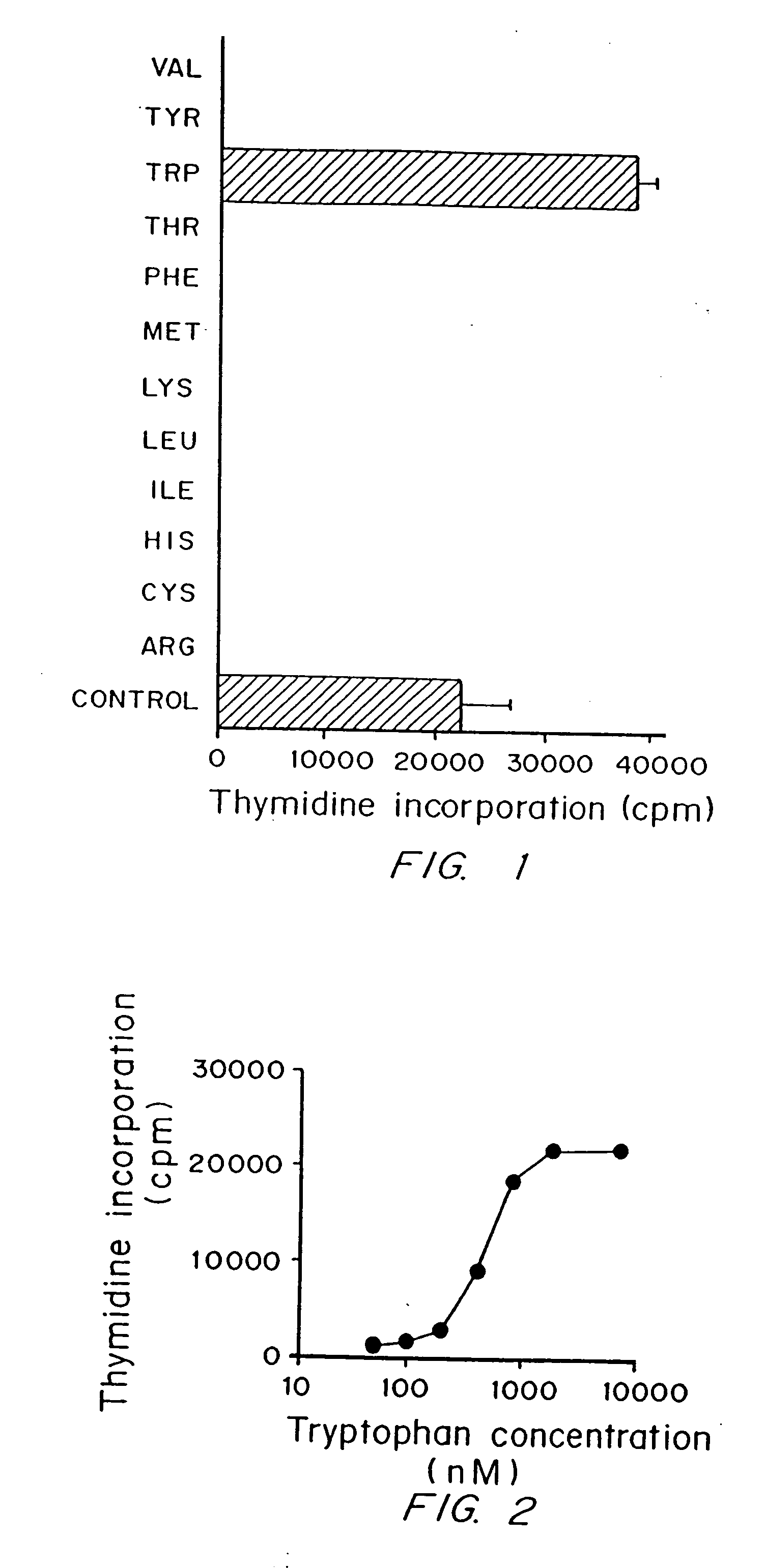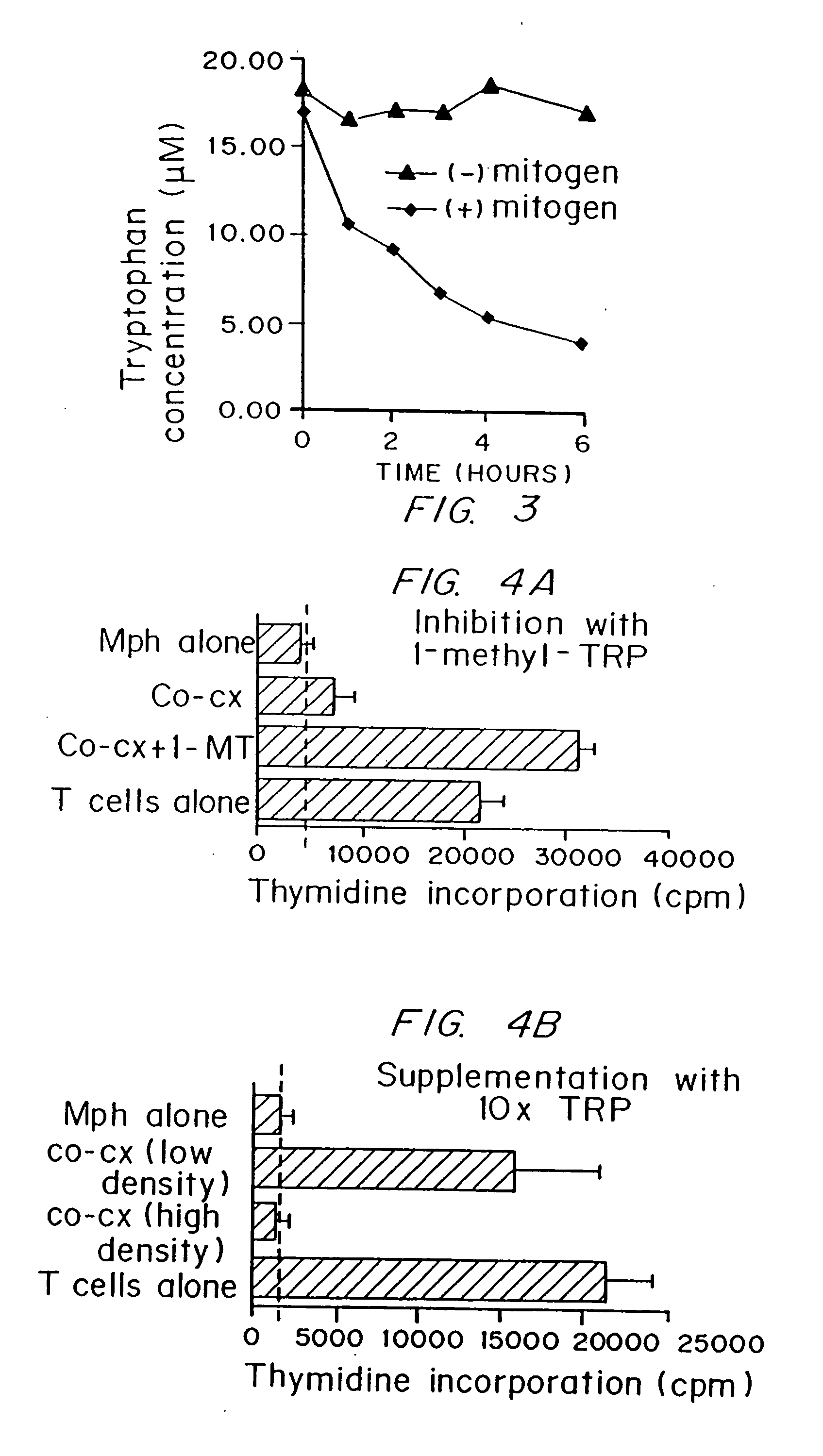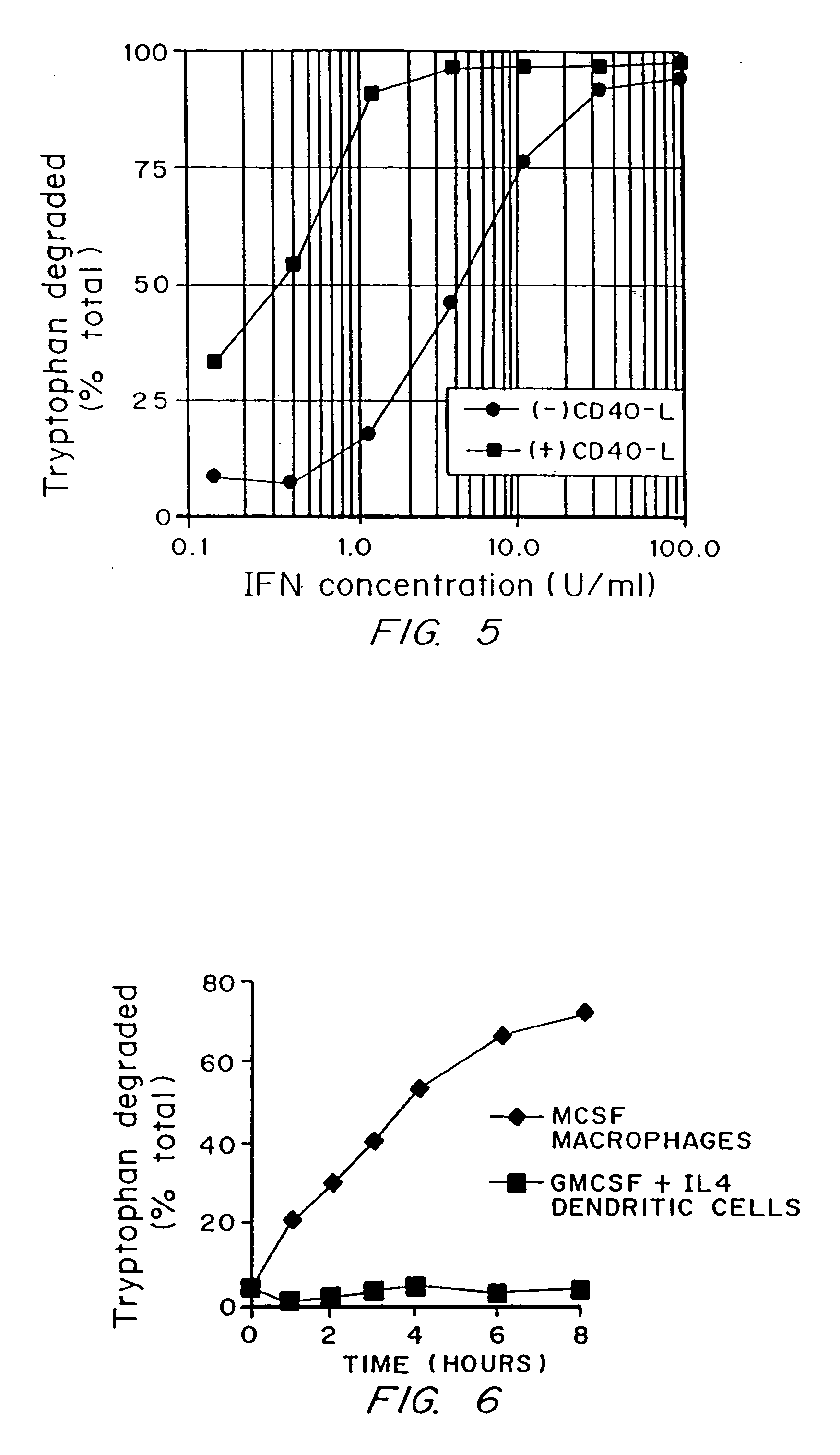Regulation of T cell-mediated immunity by tryptophan
a technology tryptophan, which is applied in the field of t cell-mediated immunity regulation by tryptophan, can solve the problems of many self-antigens unavoidably entering the normal antigen-presentation pathway, affecting the survival rate of patients, and affecting the treatment effect of patients, so as to reduce the viral load
- Summary
- Abstract
- Description
- Claims
- Application Information
AI Technical Summary
Benefits of technology
Problems solved by technology
Method used
Image
Examples
example 1
Macrophage-induced Suppression
[0089] As described in Munn, et al. J. Immunol. 1996;156:523-532, a number of possible mechanisms for macrophage-induced suppression were initially examined. None of those tested, including the fas / fas-L system, nitric oxide, free radicals, prostaglandins, and inhibitory cytokines, could account for the phenomenon. Studies demonstrated the following regarding macrophage inhibition of T cell proliferation: [0090] (1) MCSF-derived macrophages inhibit the mitogen-induced proliferation of T cells, and this is a dominant effect—i.e., it is not rescued by adding non-inhibitory APCs. [0091] (2) The T cells initiate early activation, as assessed by activation-related G1 phase genes (IL-2 receptor, cdc2, cyclin A), but arrest prior to the first G1 / S boundary. This arrest is not a stable condition, and most of the lymphocytes progressively die off. [0092] (3) The suppressive effect was developmentally regulated by MCSF and IFNγ. It was not present in fresh monoc...
example 2
Tryptophan Degradation by MCSF-derived Macrophages
[0094] Medium in macrophage-lymphocyte co-cultures is selectively depleted of tryptophan. Conditioned medium was generated from co-cultures of macrophages plus T cells activated with mitogen (two different mitogens, anti-CD3 antibody and SEB, gave equivalent results; the data presented are from anti-CD3). Fresh lymphocytes were suspended in conditioned medium and activated with additional mitogen. Care was taken to exclude all traces of fresh medium.
[0095] As shown in FIG. 1, conditioned medium completely failed to support T cell proliferation (less than 1% of the proliferation in fresh medium). In contrast, control conditioned media from macrophages alone, from co-cultures of macrophages and T cells without mitogen, and from T cells activated with fresh monocytes instead of macrophages, all supported T cell proliferation comparably to fresh medium (90-140%) of control, n=3-4 in each group, p=NS by ANOVA, see Munn J. Immunol. 1996;...
example 3
Inhibition of Tryptophan degradation by MCSF-derived Macrophages Prevents Suppression of T Cells
[0099] Inhibition of tryptophan degradation prevents Macrophage-mediated suppression of Tcells. The data predicts that pharmacologic inhibitors of IDO should prevent suppression. One potent inhibitor of IDO is the 1-methyl derivative of tryptophan (Cady, et al. Arch. Biochem. Biophys. 1991;291:326-333). As shown in FIG. 4A, the presence of 1-methyl-tryptophan effectively prevented macrophages from suppressing T cell activation. These data were selected in order to clearly demonstrate that suppression can be abrogated, but in most experiments the effect of 1-methyl-tryptophan has been less complete (typically 59-60% reversal of suppression). This was not unexpected, given the extremely high level of enzyme activity and the fact that 1-methyl-tryptophan is a competitive, rather than an irreversible, inhibitor. In order to fully abrogate macrophage-mediated suppression it will be necessary ...
PUM
| Property | Measurement | Unit |
|---|---|---|
| concentrations | aaaaa | aaaaa |
| pharmaceutical composition | aaaaa | aaaaa |
| enzyme activity | aaaaa | aaaaa |
Abstract
Description
Claims
Application Information
 Login to View More
Login to View More - R&D
- Intellectual Property
- Life Sciences
- Materials
- Tech Scout
- Unparalleled Data Quality
- Higher Quality Content
- 60% Fewer Hallucinations
Browse by: Latest US Patents, China's latest patents, Technical Efficacy Thesaurus, Application Domain, Technology Topic, Popular Technical Reports.
© 2025 PatSnap. All rights reserved.Legal|Privacy policy|Modern Slavery Act Transparency Statement|Sitemap|About US| Contact US: help@patsnap.com



